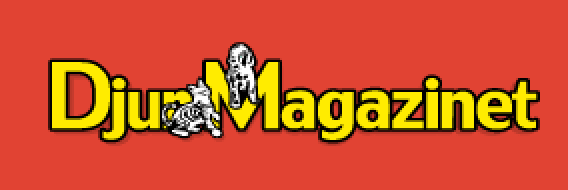Danish-Swedish Farm dog
FCI:
Danish-Swedish Farm dog - Group 2 - Pinscher and Schnauzer – Molossoid breeds – Swiss Mountain and Cattle Dogs, Section 1.1 Pinscher Type
General Appearance:
It's moving, lively, curious and intelligent, loves the excitement and contributes its permanently good mood for the family just fine. Despite its size, it is undisputed personalities. With children it behaves friendly and ever ready to play with them. It is generally kind to other dogs, but not quite trustworthy company for small pets such as guinea pigs, rats, hamsters, dwarf rabbits and parrots and other birds. It is not advisable to leave them alone without supervision by responsible person, even if it has been properly socialized at an early age.
It is very fast and if it finds in the garden in the ground a hole that reminds it, entry into the mouse hole, immediately begins a steep burrow. It is therefore not best breed for gardeners, if it should be unable to use part of the land on which their activity would not mind.
Temperament/ Behaviour:
They learn quickly and relatively easily it can train for different dog sports complying with its size, such as agility, frisbee, obedience, etc. With the coach is able to manage at the highest level. For these purposes, it is best to start training to the extent appropriate and playful way already at growing puppy. It is also able to learn and to master a series of different exercises and tricks, allowing its use in circus performances.
Although today is mostly social breed, it is able, after appropriate training and advice on pasture with large cattle, without the slightest fear. It watchful guard, but not barking - barks if one can be sure the owner that something goes wrong, what deserves its attention.
You can keep it in the apartment, but they must if it is staying at home alone, you need to give it due to its innate liveliness enough options to foreclosure (various toys, especially interactive, etc.). Also important are the walks. Part of the longest that would daily take min. 1 hour, there must be some other physical activity (throwing the ball, jumping over barriers of adequate height chase with the owner and children, training agility, obedience, etc.). It welcomes the opportunity daily free range on the fenced property. With good obedience it is possible to freely let go as well in nature, but you must remember that it'll never miss a wild rabbit or hare, squirrel or cat or other small animal that comes into its vision field. It immediately starts to chase all, and in such cases usually it cannot be called properly.
The basis of education and training is like other breeds in consistency. It must be kind, but completely uncompromising. Even novice owner respects if this requirement, it can grow well-managed and sympathetic companion.
Body:
This is a smaller breed of compact body, slightly elongated body frame - height at withers and the length of the body is at 9: 10. Height at withers is 34 to 37 cm , male and 32-35 cm female; weight of body is 7-12 kg.
The head should be triangular in proportion to body size is relatively small. The skull is rather broad and slightly arched above. The frontal slope (stop) must be clearly declining; muzzle should be strong and gradually tapering towards the nose, but must never be explicitly pointed or weak. Its length measured from tip of nose to stop (the junction of the inner corners of the eye) is shorter than the length of the skull measured from the stop to the occipital area.
Nasal bridge must be straight and has a colour of coat. Strong jaws bite requires regular scissor, but the bite is also acceptable, cutters should be large. Cheeks protrude sideways (the muscle is strong), but not excessively.
Eyes should be medium-sized, almost round shape. They may never be either sunken or protruding. They should be individuals with black spots in a dark coat, a lighter permissible for individuals with yellow or chocolate brown marking. Their expression has to be courageous, but peaceful.
The earlobes are folded backward or forward tilted (the original), so that the bend is always just above the upper line of the skull. In both cases they have to be level with the top line of the skull or slightly above it. Tip forward banked ears must fit closely to the cheek.
The neck should be moderately long, strong, slightly arched in the nape. On the neck may be lobe. The body is a compact, adequate substance (good strength). The loin should be short, broad, slightly arched. Croup is required slightly rounded. The tail must not be deployed disproportionately high and may be congenitally short or long normally. Straight, towards the end slightly upward bent or curved sickle.
Chest should be long, deep and very spacious, consisting of appropriately sprung ribs. The chest is distinctive when viewed from the front is wider than the rib cage. Abdomen not too tucked up (as an example- Whippets).
The forelegs are seen from the front straight and parallel. Scapula and humerus must be oblique. Pasterns should be strong and flexible feet are small, oval-shaped and with a slightly clenched fingers. The hindquarters should be viewed from behind parallel to each other, heavily muscled, knees and hock angulations properly. Thighs are quite broad paws should be the same as the forequarters. For Limbs parallel to each other, their action is light (easy).
The coat should be short, smooth fitting to the body, harsh. In her colouring should prevail white. Characters can be different colours and sizes, any combination (black, tan, brown or various shades of fawn), called- tan (tan markings) or without them. Flecking is permissible.




